This post is about the major cities of Germany. Compared to the rest of the world, German cities are rather dainty.
1. Berlin

Inhabitants approx.: 3.700.000
In the first place is the capital of the FRG. Worldwide one of the most popular tourist destinations among young people when it comes to big city.
The state of Berlin is located in the northeast of the country in the middle of Brandenburg.
The “green city” is over 750 years old. The largest river, the Spree, contributed significantly to its development as a trade route. The Berlin Wall divided the city from north to south into west and east for 28 years, 1961-1989.
The most important buildings and sights of Berlin are: the TV Tower, Berlin Cathedral, the Reichstag, the Brandenburg Gate, the Museum Island, the Victory Column and, for example, the Memorial Church on Kurfürstendamm.
Nationally known and excellent beers are e.g. Berliner Kindl, Berliner Pilsener, Schultheiss and the former Berliner Bürgerbräu, which was still produced until 2010.
The license plate number is “B”.
2. Hamburg
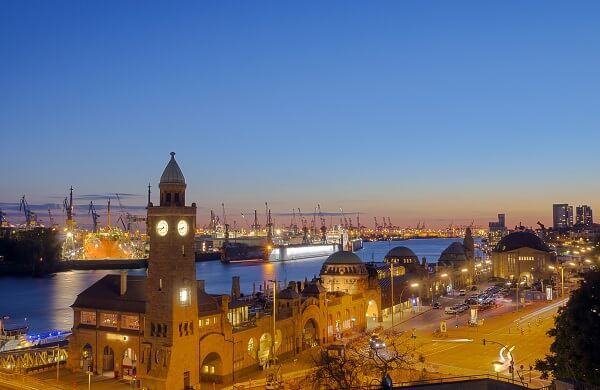
Inhabitants approx.: 1.9000.000
It is not located directly on the sea, the port of Hamburg is connected by the Elbe with the North Sea. It is one of the largest transshipment ports in the world. The Hanseatic City of Hamburg is also a state of the FRG. Hamburg is known for the Reeperbahn, the Speicherstadt, the Elbphilharmonie and the port of Hamburg. The history of the port city goes back to more than 1200 years – one of the most important trading places at that time. A very famous type of beer in Hamburg is Astra, you will come across that everywhere in the city.
A very famous football club is Hamburger SV with over 130 years of club history.
3. München
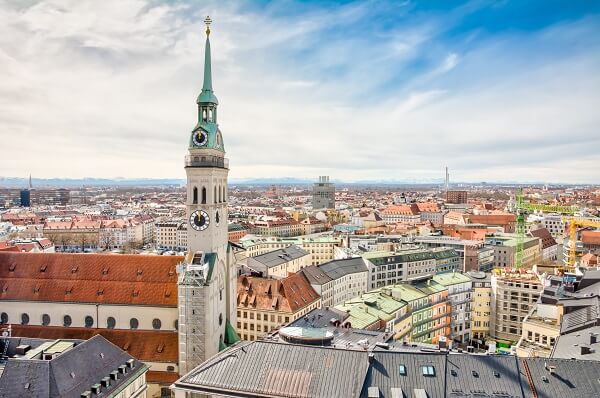
Inhabitants approx.: 1.560.000
The capital of the Free State of Bavaria looks back on a history of over 750 years. Only 10% of the beautiful old town remained after the 2nd World War. Munich was always the home base and symbol of the NSDAP in the Third Reich. The city has a huge economic importance with 5 resident DAX companies(Berlin has 2).
What is the first thing that comes to mind when it comes to Munich landmarks? The Hofbräuhaus, the Marienplatz with Viktualienmarkt and Oktoberfest. But on a visit, the three Pinakothek museums, the Olympic Park, the German Museum, Karlsplatz and the Frauenkirche should not be missing from the cultural list. Culinary fame is gained in the city with roasted knuckle of pork and sauerkraut, white sausages with sweet mustard, Leberkässemmel and, for example, Reiberdatschi.
All these dishes are accompanied by the basic drink of the region – wheat beer. People with a wheat intolerance have to be careful here, however, because wheat beer brewing uses a large proportion of wheat malt in addition to hops, yeast and barley malt. I myself am a big wheat beer fan, but I can’t tolerate most of the varieties. I also have the feeling that the allergy-causing substances are particularly well dissolved in wheat beer and can have an effect.
The most popular and best-known Munich beers are Löwenbräu, Hofbräu, the beer of the Spatenbrauerei, Paulaner and, for example, the oldest of the city – Augustiner Bräu which has been brewed there for almost 750 years.
4. Köln

Inhabitants approx.: 1.090.000
Germany’s fourth largest city is located directly on the Rhine in North Rhine-Westphalia.
With over 2000 years of urban history, the former Hanseatic city is one of the oldest German cities.
It is known as a carnival stronghold and for the Cologne Cathedral. Trade fairs such as Gamescom, FIBO, Photokina and Art de Cologne are held regularly in Cologne. Already in Roman times, the city, then called Colonia Claudia Ara Aggrippinensium, was granted city rights in the year 50.
Cologne has Germany’s largest gay community with about 100,000 lesbians and gays who feel very comfortable in the city.
5. Frankfurt am Main

Inhabitants approx.: 760.000
Here we have one of the most important international financial centers with over 1200 years of history.
For example, Deutsche Bank, the German Football Association, the Frankfurt Stock Exchange and the European Central Bank are located here. The Frankfurt airport, one of the largest in the world, is also impressive. Frankfurt’s skyline is equally unique, with some of the largest buildings in Europe, it is also called “Mainhatten”.
Worth seeing are, for example, the Kaiserdom, the Paulskirche, the Alte Oper and the zoo, which is over 150 years old.
In the bombing war, the entire city center and old town were destroyed by the British as a result of 2000 bombing raids and nearly 30,000t of bomb load.
6. Stuttgart

Inhabitants approx.: 635.000
The capital of the state of Baden-Württemberg comes in 6th on this list. The city was able to become one of the largest metropolitan areas in Germany thanks in part to the Neckar River as a waterway.
Besides the seven public universities, the city of Stuttgart is also known for the first Waldorf school in Germany. The area was a transportation hub over 1000 years ago before the city was founded. This made it a very important strategic point.
This magnificent German city was also a victim of the Allied air raids. The civilian area bombing with a total of over 200,000 bombs destroyed nearly 40,000 mostly residential buildings and killed about 4500 civilians.
The most popular sights are the Mercedes-Benz Museum, the TV Tower, the State Gallery, the Porsche Museum and the New Castle.
7. Düsseldorf

Inhabitants approx.: 620.000
The city of Düsseldorf, located on the Rhine, is also a state capital, that of North Rhine-Westphalia. It has had city rights for just over 730 years, but the history of the settlement goes back several hundred years further.
The license plate number is a simple “D”.
Worth seeing during a visit are: Rhine Tower, Media Harbor, Benrath Castle and Kaiserwerth.
This major German city went like many others with about 50% of residential buildings destroyed by bombs and over 5000 civilians dead. Furthermore, every year on 11.11. also starts the carnival season in Düsseldorf and the city becomes foolish.
The football rival of Fortuna Düsseldorf is the 1.FC Cologne.
8. Leipzig
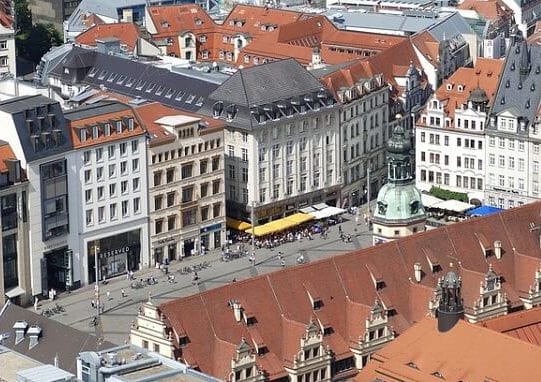
Inhabitants approx.: 590.000
The former trade fair city of Leipzig obtained its city charter in 1165, and thus looks back on a city history of more than 850 years. Leipzig’s trade fair tradition began as early as 1190!
With its approximately 590,000 inhabitants, Leipzig is the largest city by population in the Free State of Saxony. Leipzig is very famous for the Battle of the Nations of 1813 against Napoleon’s Grande Armee, which was won in front of the city’s gates. The Monument to the Battle of the Nations, built by Bruno Schmitz, was inaugurated in Leipzig 100 years later. It is usually at the top of tourists’ sighseeing lists.
As one of Germany’s major cities, Leipzig was not spared from Allied bombers. Over 6000 deaths and 60% destroyed buildings are the results after WW2.
Leipzig also became the center of the peaceful revolution in 1989 in which the GDR was annexed to the FRG. Several 100,000 people took part in the Monday demonstrations. They are considered an important building block for the fall of the Berlin Wall and reunification.
Other sights are the old town hall, the main train station (the largest in Europe), the Museum of Ethnology, St. Nicholas and St. Thomas Church.
The license plate of Leipzig is “L”.
9. Dortmund

Inhabitants approx.: 590.000
Located in North Rhine-Westphalia is also the ninth largest city in Germany and the third largest city in the state.
The Ruhr City is home to over 50,000 students in 19 academic institutions. The Signal Iduna Park stadium is the largest in Germany(81,000 seats) and home to the Borussia Dortmund(BVB) soccer club.
The history of the city of Dortmund goes back over 1100 years and accordingly there are many centuries old buildings like the “Holthousen”. When visiting the city, you can also see the German Football Museum, the Rombergpark Botanical Garden, the Dortmund Zoo, or the Bergmann Brewery.
As a major German city, Dortmund also had to atone with civilian casualties during bombing raids in 1943. Over 100,000 people lost their homes. One of the great beers of Germany is located in Steigerstrasse / Dortmund, it is called DAB – Dortmunder Actien-Brauerei.
10. Essen
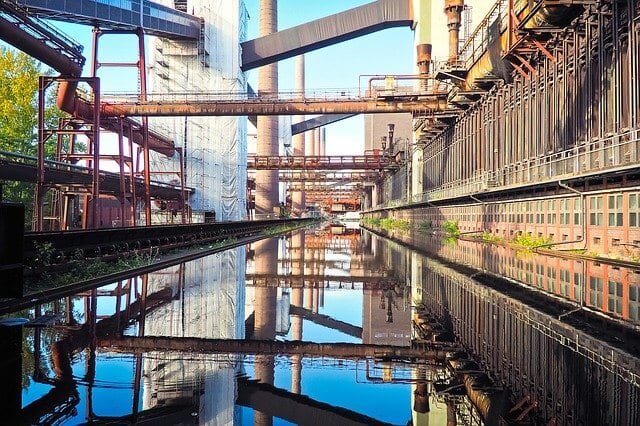
Inhabitants approx.: 580.000
With 210km² area in the middle of the Ruhr area, place 10 has a remarkable urban area. The city has over 1200 years of history. Madness, that is almost 5 times older than the history of the state USA!
Until the 2nd World War one of the largest locations of heavy industry in Germany. At that time Essen was called the “cannon city”.
In the 2nd World War this city was also a victim of destructive Allied bombs, so 90% of the city center was destroyed. The huge Krupp factory was also almost completely destroyed.
Important sights are: Villa Hügel, the Zollverein coal mine, Lake Baldeney, the Grillo Theater and Borbeck Castle.
The license plate number is “E”.
11. Bremen

Inhabitants approx.: 570.000
The Hanseatic city is located in the north of Germany on the Weser River. It is also federal state – “Free Hanseatic City of Bremen” together with Bremerhaven, which is about 50km away.
Bremen also has a very long city history, which goes back to the 9th century. In 1260 Bremen joined the Hanseatic League.
Bremen suffered heavy destruction during the bombing raids in the 2nd World War. They claimed not only 60% of the buildings but also about 4000 dead civilians.
The license plate number is “HB”.
12. Dresden
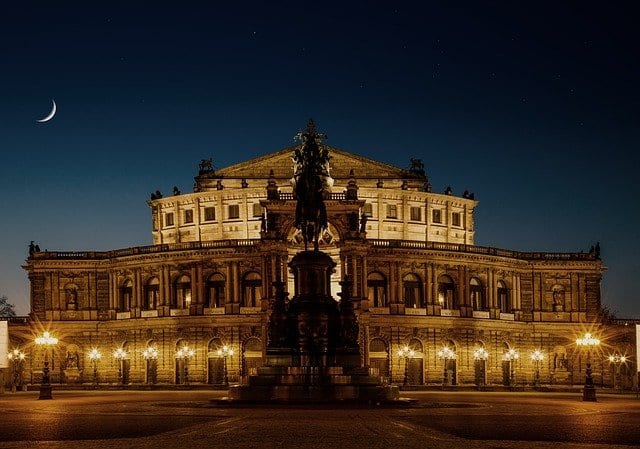
Inhabitants approx.: 555.000
Car license plate: DD
First documentary mention: 1206
The government of the Free State of Saxony is located in the state capital Dresden. It is also known as an important German cultural city with many magnificent buildings.
The city is divided by the mighty river Elbe on 30km river length, which of course greatly facilitated trade in the past.
Among the most important sights are: Semper Opera House, Dresden Zwinger, Church of Our Lady, Catholic Court Church, the Green Vault and, for example, the gas reservoir – the Panometer of Dresden.
A famous football club, founded in the GDR in 1953, is the 1st FC Dynamo Dresden, it plays in the 3rd league in 2021.
As a large city, Dresden was of course not spared from the refugee crisis in 2015, so that its proportion of foreigners has well doubled to just under 10% within the last 10 years.
In the Allied bombing war, the entire city center was destroyed and the number of victims today is estimated at just under 23,000 dead.
13. Hannover

Inhabitants approx.: 535.000
Car license plate: H
This is about the capital of Lower Saxony with almost 800 years of history as a city since 1241.
The former Prussian provincial capital(1866 – 1946) is located on the river Leine.
Of course, this German city also has a great football club – Hannover 96.
Top 5 Sights of Hannover:
The New Town Hall, Aegidienkirsche, Herrenhäuser Gärten, Deutsche Messe Kongrsszentrum and the Erlebnis Zoo.
14. Nürnberg
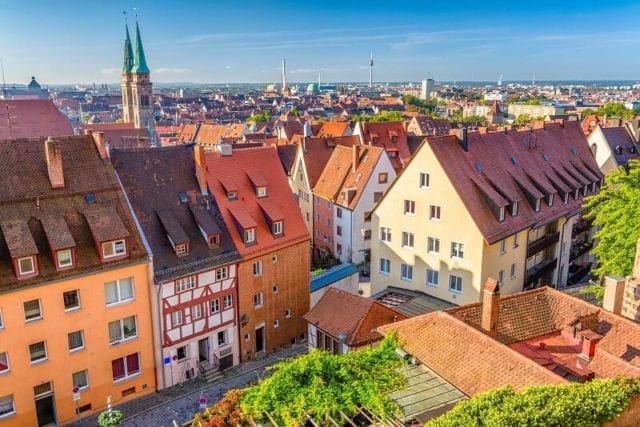
Inhabitants approx.: 520.000
15. Duisburg

Inhabitants approx.: 500.000
16. Bochum
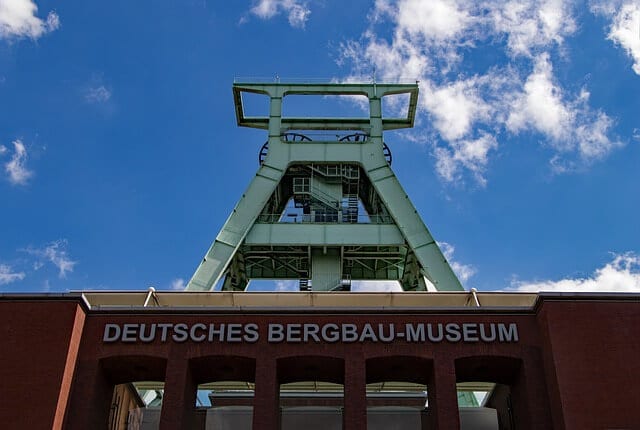
Inhabitants approx.: 365.000
17. Wuppertal

Inhabitants approx.: 355.000
18. Bielefeld
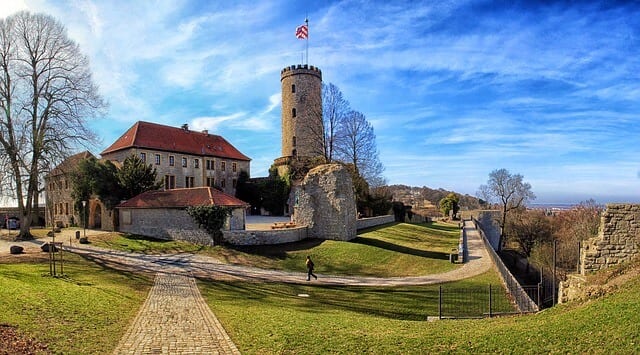
Inhabitants approx.: 335.000
19. Bonn

Inhabitants approx.: 330.000
20. Münster

Inhabitants approx.: 315.000
21. Karlsruhe
Inhabitants approx.: 310.000
22. Mannheim
Inhabitants approx.: 310.000
23. Augsburg
Inhabitants approx.: 300.000
24. Wiesbaden
Inhabitants approx.: 280.000
25. Mönchengladbach
Inhabitants approx.: 260.000
26. Gelsenkirchen
Inhabitants approx.: 260.000
27. Braunschweig
Inhabitants approx.: 250.000
28. Aachen
Inhabitants approx.: 250.000
29. Kiel
Inhabitants approx.: 245.000
30. Chemnitz
Inhabitants approx.: 245.000
31. Halle
32. Magdeburg
33. Freiburg im Breisgau
34. Krefeld
35. Mainz
36. Lübeck
37. Erfurt
38. Oberhausen
39. Rostock
40. Kassel
41. Hagen
42. Saarbrücken
43. Potsdam
44. Hamm
45. Ludwigshafen am Rhein
46. Mülheim an der Ruhr
47. Oldenburg
48. Osnabrück
49. Leverkusen
50. Heidelberg
51. Darmstadt
52. Solingen
53. Herne
54. Neuss
55. Regensburg
56. Paderborn
57. Ingolstadt
58. Offenbach am Main
59. Fürth
60. Würzburg
61. Ulm
62. Heilbronn
63. Pforzheim
64. Wolfsburg
65. Göttingen
66. Bottrop
67. Reutlingen
68. Koblenz
69. Bremerhaven
70. Erlangen
*Einwohnerzahlen Stand 2020
